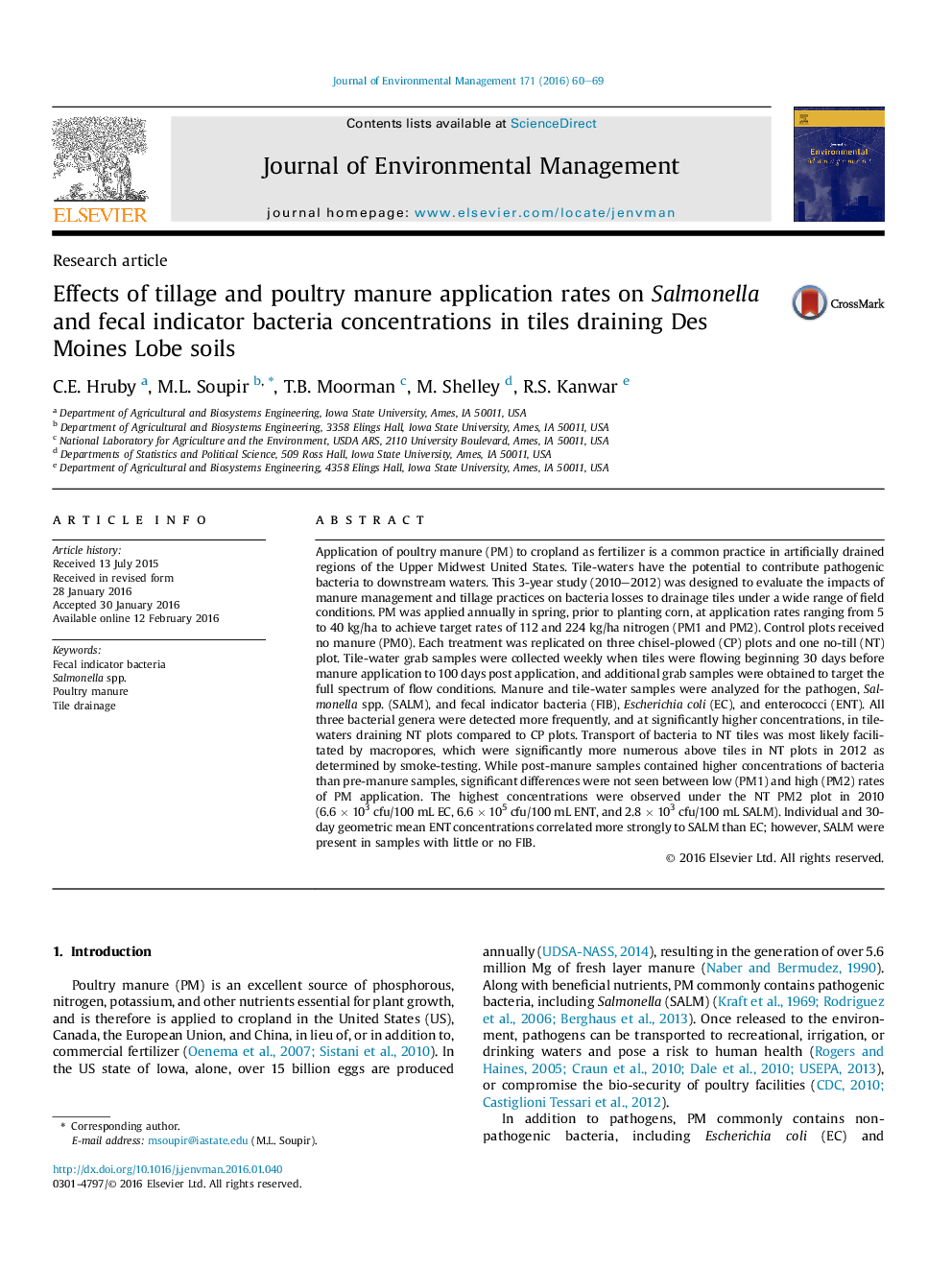| Article ID | Journal | Published Year | Pages | File Type |
|---|---|---|---|---|
| 1055298 | Journal of Environmental Management | 2016 | 10 Pages |
•Salmonella and fecal indicator bacteria (FIB) were detected in tile drainage water.•Higher poultry manure application rates resulted in higher bacteria concentrations.•Individual and 30-day geometric mean Enterococcus concentrations best correlated with Salmonella.•Bacteria transport to tiles was mediated by macropores in plots under no-till management.•Elevated bacteria levels persisted for more than 3 months in years with above-average rainfall.
Application of poultry manure (PM) to cropland as fertilizer is a common practice in artificially drained regions of the Upper Midwest United States. Tile-waters have the potential to contribute pathogenic bacteria to downstream waters. This 3-year study (2010–2012) was designed to evaluate the impacts of manure management and tillage practices on bacteria losses to drainage tiles under a wide range of field conditions. PM was applied annually in spring, prior to planting corn, at application rates ranging from 5 to 40 kg/ha to achieve target rates of 112 and 224 kg/ha nitrogen (PM1 and PM2). Control plots received no manure (PM0). Each treatment was replicated on three chisel-plowed (CP) plots and one no-till (NT) plot. Tile-water grab samples were collected weekly when tiles were flowing beginning 30 days before manure application to 100 days post application, and additional grab samples were obtained to target the full spectrum of flow conditions. Manure and tile-water samples were analyzed for the pathogen, Salmonella spp. (SALM), and fecal indicator bacteria (FIB), Escherichia coli (EC), and enterococci (ENT). All three bacterial genera were detected more frequently, and at significantly higher concentrations, in tile-waters draining NT plots compared to CP plots. Transport of bacteria to NT tiles was most likely facilitated by macropores, which were significantly more numerous above tiles in NT plots in 2012 as determined by smoke-testing. While post-manure samples contained higher concentrations of bacteria than pre-manure samples, significant differences were not seen between low (PM1) and high (PM2) rates of PM application. The highest concentrations were observed under the NT PM2 plot in 2010 (6.6 × 103 cfu/100 mL EC, 6.6 × 105 cfu/100 mL ENT, and 2.8 × 103 cfu/100 mL SALM). Individual and 30-day geometric mean ENT concentrations correlated more strongly to SALM than EC; however, SALM were present in samples with little or no FIB.
